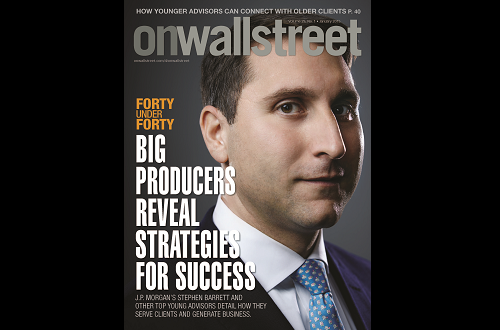
40 Under 40
Later this month, On Wall Street will also unveil the top ten regional advisors under age 40.
To read the web-only version of this slideshow, click
here
.

No. 30: Joshua Malkin
Production: $3.123 million
AUM: $585 million
Age: 38
In the first half of the last decade, Joshua Malkin was building a highly successful career working as an attorney helping guide companies through mergers and acquisitions.
He was climbing the ranks at Davis, Polk & Wardwell and had begun to serve as lead attorney on some of the deals. But something about the work left him cold.
"I was asking myself the question of what led me to be a lawyer in the first place and what was I seeking and what I was not getting out of that career," he says. "I've always loved listening to people's problems and helping solve them."
The decision to leave a top-tier law firm was a difficult one, and Malkin recalls the deep anxiety he felt in the early days of setting up his advisory practice.
"For the first 12-18 months," Malkin says, "I woke up every morning at 3 a.m. with a burning pit in my stomach."
It wasn't an immediate jump. Malkin says that he spent a year or so after leaving the law firm weighing out his options for his next move. As an attorney, Malkin says he spent about 5% of his time directly advising clients, and he wanted to do more of it.
He had his sights set on finance, and considered areas like venture capital, private equity and hedge funds, but ultimately decided that wealth management was where he would make his mark, and do it on his own terms.
"I didn't want to come into the business and just join a team," he says. "It was wealth management that jumped out at me as something that you can make anything you want out of that business."
Image: Joshua Malkin
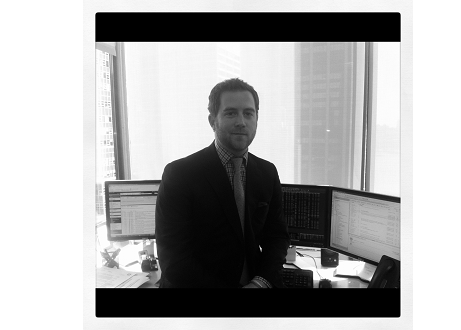
No. 29: Andrew Ryan
Production: $3.228 million
AUM: $1.8 billion
Age: 37
Andrew Ryan calls his road to becoming a financial advisor "organic," describing a path that started out in San Francisco at the now-defunct Robertson Stephens and led to a large, globally focused practice now in New York serving ultrahigh-net-worth clients.
Early in his career, he became immersed in the world of private equity and venture capital, and eventually moved onto Jefferies before joining Deutsche Asset and Wealth Management.
But within a sprawling financial apparatus such as the ones where Ryan cut his teeth, there were any number of directions in which he could have gone. Private wealth management, however, stuck out as the most exciting business line to pursue.
"It seemed to be much more interesting than any independent vertical within the bank," Ryan says. "Any given day you're dealing with multiple complex problems."
Still, Ryan says that he relies heavily on the Deutsche Bank infrastructure in his practice, leveraging the institutional resources of the bank to serve a roster of clients who tend to hold highly concentrated positions and are most concerned with wealth preservation strategies.
He talks of his efforts to "flatten the organization" within Deutsche Bank to integrate his practice with the more traditional investment banking operations of the financial giant.
Hedges against clients' concentrated positions are vital elements of Ryan's wealth management strategy, and everyone on his team holds a trading license and keeps an active eye on the fluctuations of the market.
"Volatility has become more embedded in the market," he says.
Ryan says he made it a point to maintain his practice on Wall Street to keep close to the action and to work alongside the other facets of the Deutsche operation.
"It's really important in this market, with this volatility to really make sure you have someone there with eyes on the Street to manage the wealth," he says.
Image: Andrew Ryan
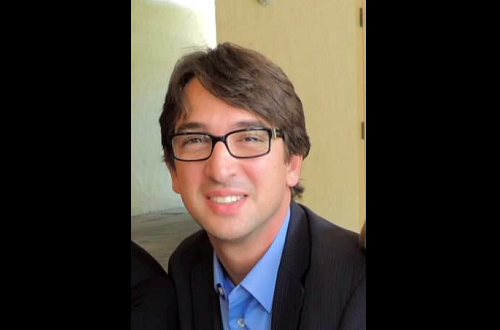
No. 28: Fulvio Urbinati
Production: $3.263 million
AUM: $341 million
Age: 35
Early on in his career, Fulvio Urbinati determined that he wanted to work with capital markets, and when it came time to choose between working in an institutional environment and making his mark as a broker, he didn't hesitate to choose the latter.
His road to advising took him through the world of bond trading and private banking, doing stints at Banco Santander and BNP Paribas before landing at Morgan Stanley.
But in wealth management and advising, Urbinati has gone back to his roots. Now as one of two partners in a thriving Miami practice, he serves a roster of high-net-worth clients who primarily hail from Brazil, his native country.
"The move from bank to broker-dealer is a very hard move," Urbinati says.
"I started doing this 12 years ago, and the beginning was very hard, but as you go along your book starts growing and people start referring family and friends to you," he says.
Urbinati and his partner, Edouard Crepy, met at BNP Paribas, where they worked with clients together before deciding, in 2011, to leave the firm and set up their own practice.
"That was the single most important change in our career," Urbinati recalls.
He says that the fundamentals of advising his foreign-based clientele are generally similar to the considerations of the domestic clients with whom he works, though operating overseas creates an additional challenge in the form of complying with local laws and regulations.
Urbinati's high-touch approach with his foreign clients also means that he travels more than many of his colleagues. He estimates that he and Crepy visit clients in Brazil at least a dozen times a year and also head to Peru and Europe once or twice a year to meet with clients there.
"I do like it. If you don't like it you're not going to do it," Urbinati says of his travel schedule. "After a while it just becomes normal."
Image: Fulvio Urbinati
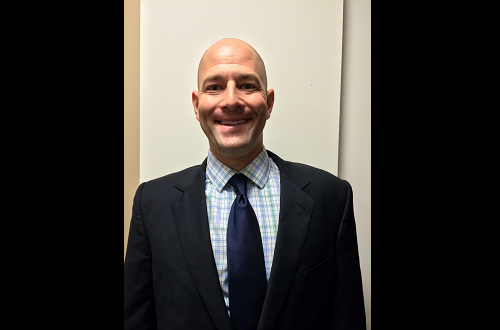
No. 27: Marc Kessler
Production: $3.335 million
AUM: $658 million
Age: 38
There is a lot of money to be made in real estate in Los Angeles, and Marc Kessler manages quite a bit of it.
Kessler, a sole practitioner in Beverly Hills, Calif., calls himself "an army of one," catering to a small set of high-net-worth investors with large portions of their fortunes staked in local real estate.
In fact, he handles about 70 clients, but most of those are smaller relationships who are holdovers from his early days in the industry. Kessler estimates that about 90% of the assets that he manages are held by eight or nine of his clients.
"I don't have a large book of business in terms of number of clients, so I get to know my clients really well," he says.
It wasn't always that way, to be sure. Kessler recalls a grueling process of cold calling day in and day out as a young financial advisor trying to build his book. He would buy lead cards, research businesses on the Internet and sniff out leads anywhere he could, work the phones and try not to let the chronic rejection get to him.
"It's a hard thing to do every day and come back and do it again, but you have to," Kessler says. "The upshot of it is it really caused me to learn my stuff."
And the cold calling paid off. Kessler recalls phoning one prospect who referred him to a wealthy business associate, a man who would eventually become a client and, with a nine-figure account, is today the largest single relationship that Kessler serves.
Kessler's high-value real estate clients tend to be past the wealth-accumulation stage of their lives, and many are looking for investment alternatives that provide acceptable yield but free them from the hassle of managing property.
"That's why my business has so much focus on fixed income," says Kessler, who of late has been steering clients toward municipal bonds. "People can get some returns that are acceptable to them in a way that involves much less headache than managing real estate."
Image: Marc Kessler
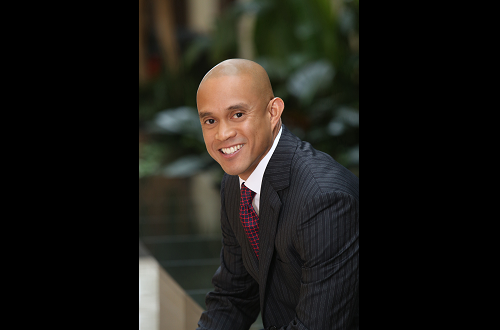
No. 26: Ronald Mencias
Production: $3.366 million
AUM: $528 million
Age: 39
Financial advisors sometimes snag high-net-worth clients through unorthodox channels.
Ronald Mencias went to Notre Dame University on a tennis scholarship, took a degree in accounting and today finds himself advising a handful of professional players.
"I've actually used my tennis to get some high-profile clients that are on the tour," he says.
Although most of the clients Mencias serves with his partner, Eric Payne (No. 9 on this year's list), in his Carmel, Ind.-based practice are business owners and physicians, he hooked up with a local tennis pro who hosts an annual charity tournament in Indiana.
Then at the event last year, that player introduced Mencias to a high-profile doubles team on the tour, and they took to the court for a practice round.
"After our hit they started to ask me what I did," Mencias says. "Two weeks later, I found myself down in Florida meeting with them and their spouses. Two weeks after that, they became clients."
As to how his play stacks up against the pros? "Not at their level, of course," Mencias says. "But to be a top collegiate player definitely helps."
Mencias takes the same approach with his other advisory relationships. He estimates that about three-quarters of the investors with whom he works are physicians, a rather specific set of clients but one that is a natural fit for Mencias, whose mother, father, brother and aunt are all doctors.
"That was just a normal market niche for me to go after," he says.
Mencias began his career as an accountant, but says that he was drawn to advising for the human side of the business.
"I enjoyed the numbers part but wanted a little more personal interaction," he says.
"The thing that attracted me most about the industry was the ability to help people make a difference in their financial lives," Mencias says. "Just being able to understand their goals, their retirement goals, and being able to see them through that process is probably the most rewarding part of my job."
Image: Ronald Mencias

No. 25: Charles Balducci
Production: 3.410 million
AUM: $1.2 billion
Age: 38
Charles Balducci's New York-based practice has grown substantially over the past year, as he and his partner, Eric Snyder, have brought on 15 new high-net-worth clients and four staff members.
Those hires have included the high-level positions of chief operating officer and chief marketing officer in the firm, as well as a research analyst and an administrative assistant.
Together, the new employees have freed up Balducci and Snyder to work a more reasonable schedule and focus on their premier clients, relieving the partners of the administrative tasks that had consumed much of their after-hours time.
"We never got into the business to be operations or HR directors," Balducci says.
But that is in essence what they became as their client base expanded over the past several years, bringing into sharp focus the need for more support staff.
"We just slept less," he says. "We were working hours that were just absurd."
Balducci's client base breaks roughly into three segments, catering to C-level corporate executives, entrepreneurs, and hedge fund managers and other heavies in the financial world.
He positions himself as an "outsourced CIO" who can oversee a client's whole financial situation, a message that resonates with wealthy clients whose holdings are split among several financial advisors.
Balducci recalls his initial meeting with one prospective client, an entrepreneur based in New York's Garment District with a clothing business worth about $80 million. The individual had about $15 million in investable assets, but his money was spread among five different advisors.
"I asked him who is the quarterback of all this? Who is making sure that these firms aren't duplicating their efforts?" Balducci says.
The prospect didn't have an answer. Balducci drew up a financial plan, pitching a comprehensive set of services and won all but about $2 million of the investor's account, the "play money" that he wanted to hold onto for day trading.
"I would absolutely say the planning part is critical to the whole situation," Balducci says. "To simply be an investment professional is not enough. These days you've got to be incredibly well-rounded."
Image: Charles Balducci

No. 24: Daniel Fries
Production: $3.414 million
AUM: $507 million
Age: 38
When Daniel Fries started his career in finance, he wasn't thinking about investment strategies for the ultra-wealthy. He was working as a bank teller, helping pay his way through college.
Fries moved up to work in business banking and mortgages, and got his securities licenses as he was finishing up his degree. At an early age, he had worked in more facets of the financial services sector than some do in the course of a career.
"I could have gone into banking or lending," Fries says.
But what intrigued him about the industry was "not really product pushing" but the "more consultative [aspects] and trying to determine what clients are trying to accomplish," he says.
"I just want to really get to know the client and get to know what their concerns are," Fries says.
That passion for helping clients achieve their financial goals remains a force in his life to this day, though he acknowledges that his approach has evolved considerably over time.
In earlier days, Fries might have met with a client and prescribed a wealth management strategy based more on that individual's immediate concerns than his long-term goals.
"I'd be enthusiastic or anxious to kind of project what I think might be the case," he says.
"I think when I was younger, x number of years ago, I wasn't quite as process-oriented," Fries says. "I think I've gotten to be a better advisor over time."
Today, Fries has everything down to a system.
Every client comes with unique goals and circumstances, to be sure, but he and his team of specialists offer clients a structured, multi-pronged approach that encompasses tax minimization, estate coordination and transition counseling.
It is hard to argue with results. As of mid-December, Fries reported that his Chicago-based practice was on track to post compounded annual growth of "well over" 20%, calling 2014 the "best year that we have ever had."
Image: Daniel Fries

No. 23: Carl Cafaro
Production: $3.453 million
AUM: $545 million
Age: 37
Carl Cafaro sees himself as a calming force in his clients' lives.
He believes that of the many facets to his work as an advisor, among the most critical is helping to keep emotion out of financial decisions. That means starting out with a comprehensive, long-term plan, and continually reminding clients that the routine ups and downs of the markets are no cause for alarm.
"The market's down 20% and people want to sell. The market's up 20% and they want to buy," Cafaro says.
"A lot of the work that we try to do with clients is really on the planning side more than anything else," he adds. "It's hard to keep a client calm and confident when you're not having conversations with them before there's choppiness in the markets."
A big part of what Cafaro's work involves planning for the transfer of wealth to a younger generation. It's a major concern for his clients, many of whom are nearing retirement or already retired. And yet, he estimates that nine out of 10 clients have never sat down with their children to have a frank conversation about their financial situation.
"I think a lot of people with wealth are really worried with how their kids are going to respond," he says. "It's amazing how many times when you sit down with the kids they have no idea what the parents' balance sheet looks like."
It can be tricky for an advisor to find his footing in those inter-generational situations. To the extent that he can be facilitator, Cafaro will often try to organize family meetings, conferring with the parents ahead of time to work out which topics to cover.
Clients have different levels of comfort and expectations for how those conversations should go. But with those meetings, as with all other areas of the practice, Cafaro strives to deliver a service model of the highest order.
"I want the client relationship with me and with our group to be the best service experience they have of any service experience they could have anywhere," he says. "I'm not even just speaking of finance."
Image: Carl Cafaro

No. 22: Joshua Carter
Production: $3.564 million
AUM: $827 million
Age: 38
Joshua Carter has his eyes on the institutional market.
Within his San Francisco-based practice, he is something of a specialist, saying that institutional clients such as nonprofits, foundations, corporate investment accounts and defined-benefits plans, among others, account for about 70% of the relationships he handles as a lead financial advisor.
That focus isn't new for Carter, but it represents a growing segment of his firm's clientele.
"It's been a great year," he says. "We've really expanded our institutional business."
Carter has eagerly embraced what Merrill calls goals-based wealth management, a relatively new initiative within the company that offers advisors a more formalized process for determining clients' objectives and tailoring a customized plan to achieve them.
That program is geared toward individuals and families, but he thinks that it can be equally useful in serving his institutional clients.
"It's essentially the same process. It's just with different clients," Carter says. "Ultimately, what you're doing with an institution or with an individual, you're trying to assess what their goals are. We really try to build a plan to address those goals."
Carter draws a parallel between institutions such as DB plans and foundations and the approach Merrill is guiding its advisors toward in their work with private clients.
The common thread is liability-driven investing, where an asset allocation plan is built to accommodate the anticipated liabilities that the client will incur. For DB plans, those liabilities are measured as the benefits owed to retiring workers. For a foundation, it might be the anticipated level of charitable contributions.
For an individual, those liabilities are formulated as goals such as philanthropic objectives, transfers to the next generation, a grandchild's college tuition or whatever clients hope to achieve with their money.
"All goals-based wealth management is LDI applied to individuals," Carter says.
With that approach, he finds success on a personal level, rather than simply tracking a client's portfolio against the performance of a certain set of indexes.
"It's not about that. It's about helping our clients achieve their goals," Carter says. "It's about changing the conversation."
Image: Joshua Carter

No. 21: Alberto Maycotte
Production: $3.579 million
AUM: $603 million
Age: 38
Every financial advisor will tell you that their clients come first, but for Alberto Maycotte, they are almost like family.
Most of his clients are wealthy family business owners who live in Mexico. Some have vacation properties in or near San Antonio, where Maycotte's solo practice is based. They come from a variety of industries, but they all tend to have large families and expect to work closely with their advisor.
"When you serve the family, you serve the head of the family, the kids, everybody, the business. It's a whole relationship," Maycotte says.
"You got to go to weddings, to baptisms. You got to know everybody, from the head of the family to the grandmother," Maycotte says. "You become almost part of the family."
The close personal ties that Maycotte forms with his clients are one of the most rewarding aspect of his practice.
He says that trust is his stock in trade, emphasizing that his role as an advisor is about much more than just picking stocks and rebalancing portfolios.
"Putting aside the technical or professional knowledge, living here and developing personal relationships through family, friends, social events, that starts giving you an opportunity to develop a pipeline," Maycotte says. "It's easier for people to trust you with their assets when they know who you are."
So it isn't uncommon for Maycotte to travel to his native Mexico to visit a client for a meandering lunch where the conversation runs from politics to family and everything in between, with finances almost an afterthought.
"Lunches down there don't take an hour. They take three or four hours," Maycotte says. "You might discuss business for 20 minutes."
And his clients have a lot on their minds beyond their portfolios. Maycotte says that his Mexican clients worry about the violence and instability brought on by the drug cartels and jarring fluctuations in the nation's economy, among other concerns.
But helping clients address those unfolding challenges is part of what he prizes in the job, what he calls "the beauty and the enigma of living and doing business in Mexico. Tomorrow might be a completely different day with a completely new set of problems."
Image: Alberto Maycotte





